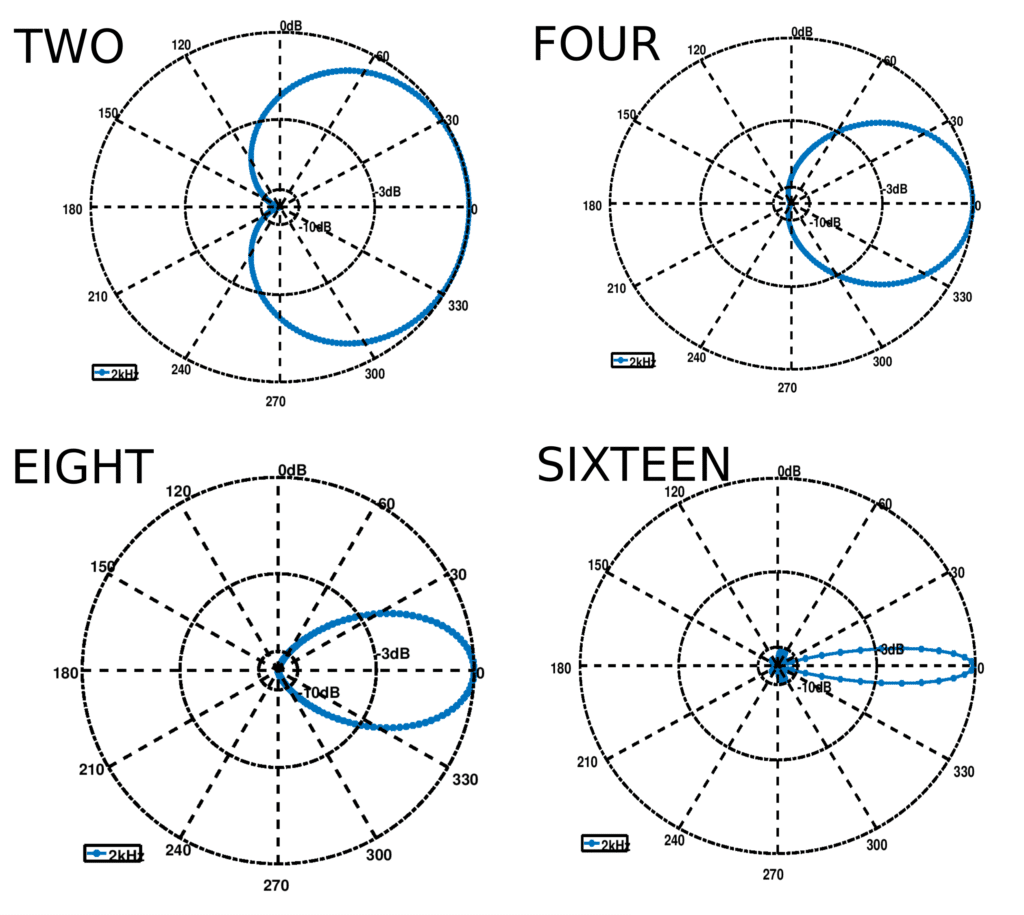Endfire microphone array topology for super directive beamforming is used frequently because of the inherent advantage of non varying magnitude of the frequency response in the desired direction. The drawback to the use of this configuration and algorithm is that the achievable beamwidth is not arbitrary and is constrained by the number of microphones being deployed. Consider the microphone array as shown in Figure 1:
Figure 1: N microphone array
The desired beamforming is an optimization problem to meet constraints for N microphones given by:
where and $\beta_{k \neq 1} << 1$. Typical values for
is zero.
is the desired beam direction and
are the null directions.
The effective beam-patterns using different number of microphones for beamforming at is shown in Figures 2 to illustrate spatial noise suppression for different direction of arrivals (DOA).
Figure 2: Spatial filtering beam patterns for different DOAs.
As shown in Figure 2, using a higher number of microphones reduces the beamwidth,which is desired to filter out as much unwanted signals as possible. Figure 2 shows the reduction in beamwidth by using 16 microphones — with 16 microphones showing a beamwidth of about as compared to more that
for using 2 microphones.
VOCAL Technologies offers custom designed solutions for beamforming with a robust voice activity detector, acoustic echo cancellation and noise suppression. Our custom implementations of such systems are meant to deliver optimum performance for your specific beamforming task. Contact us today to discuss your solution!
